~ 38 ~
~ The Study of Threes ~
http://threesology.org
Researchers as of 8/29/2019
| Devil's Advocate Series: | ||||||||
|---|---|---|---|---|---|---|---|---|
| 1 | 2 | 3 | 4 | 5 | 6 | 7 | 8 | 9 |
| 10 | 11 | 12 | 13 | 14A 14B |
15 | 16 | 17 | 18 |
| 19 | 20 | 21 | 22A 22B |
23 | 24 | 25 | 26 | 27 |
| 28 | 29 | 30 A 30 B |
31 | 32 | 33a 33b 33c |
34 | 35 | 36 |
| 37 | 38 | 39 | 40 | 41 A 41 B |
||||
Let me interject some experience I had, though it is unrelated to the present page:
Note: On Monday night I had an extremely vivid dream of the former US President Jimmmy Carter telling me goodbye. I don't know him, only of him like many others, and he has not been someone I am especially cognizant of on a day to day basis. I can not account for the dream other than to say I think I came across an internet mention of him involved with Habitat for Humanity and that I recalled reading that he had built the house he and his wife live in and that his experience doing construction work made him well suited to assist in the building of homes for others. It should be noted that one of the hallmarks of yesteryear which signaled that a man was ready for marriage was his ability to construct a home for him and his bride to be. Unfortunately, because of today's many building code and permit obstacles... and costs of materials along with the need for having multiple types of knowledge (plumbing, electrical, concrete, carpentry, etc...), building a home in the present day and age is well beyond the skills of most people whose knowledge of constructing a dwelling may serve them for some bare necessity if lost in some wilderness, but falls short of the requirements for today. After telling some people about the dream (later on today— Tuesday), I was told that he had been taken to the hospital.
The next night I dreamed of a character whose features could not be directly seen except through what appeared to be a tight fitting sheet or overall body cover, though in reflection I am thinking in terms of a thin membrane. While one may want to interpret the figure in agony trying to free themselves from a type of enclosed captivity, I really didn't get this impression. It was more of a figure stretching out and yawning. I have seen this image in some horror movie illustrations. The night following this I saw Mrs. Carter standing in silence.
If you do any research long enough, there comes a time when you begin to repeat yourself. Whether this reflects an accumulated repository of information on the subject because there is an unacknowledged but nonetheless expressed limitation in the material of the subject, or perhaps an expression of a limited memorization, one can poke and jab at different reasons or excuses for repeating oneself... as if a person is practicing some publicly taught method of learning by way of repetition. Perhaps it is merely a means by which a person convinces themselves that what they are describing actually exists as they think it does. In any respect, whatever the reason one ends up with as a satisfactory conclusion to satisfy their processes of logic at this point in reading, the repetition of a subject must be included as part of the pattern of our own patterning about patterns which also involve non-patterns as a pattern about the patterning of patterns... and so on and so forth and so— so... HA!
The point being is that memorization also leads to recognizing how often one repeats oneself and the attempts one may make in order to give oneself and others the impression that the information somehow changes by telling it a different way in a different context, aligned with varying moods, mannerisms and intended meaning, such as placing an emphasis on repeated information to highlight an assertion that may be what is needed for some readers to remember what is being said... or at least "said" in the form of writing. I mention the repetition because I am occasionally confronted by a repeating bit of music which signals to me that I have not spent enough time reading, since reading tends to diminish and remove the repetitions of one form for another... such as writing.
The "Devils Advocate" series is a repetition of various former ideas as well as an elaboration of some earlier ideas that were in the formative stages of being developed, not to mention providing the impetus for following up on those nuances of interjection which occur as when one is writing. Let me thus reiterate a former reference dealing with the abundance of organic-related substances often abbreviated with single letters meant to be used as a mnemonic:
CHOPS represents the elements Carbon, Hydrogen, Oxygen, Nitrogen, Phosphorous, and Sulfur, though there are various trace elements sometimes provided, though classification systems vary:
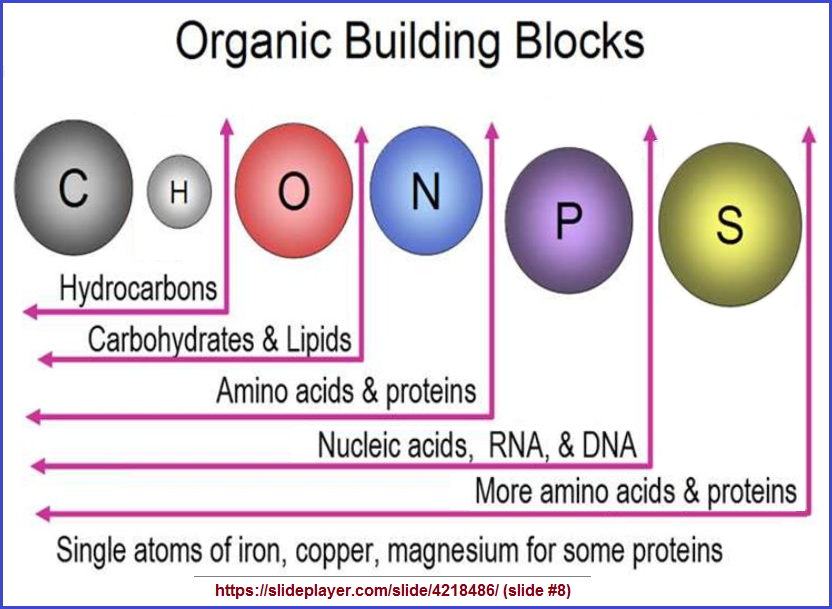
Classifications of Trace Elements
Limited attempts have been made for classifying trace elements solely. The classifications which address the presence of trace elements have been listed.
WHO (World Health Organization) Classification, 1973. As per this classification, nineteen trace elements have been divided into three groups:
- Essential elements: zinc (Zan), copper (Cub), selenium (Sea), chromium (Cry), cobalt (Co), iodine (I), manganese (Man), and molybdenum (to).
- Probably essential elements.
- Potentially toxic elements.
Fried en's Classification of Elements; In 1981, Fried en proposed a biological classification of trace elements based on their amount in issues:
- Essential trace elements: boron, cobalt, copper, iodine, iron, manganese, molybdenum, and zinc.
- Probably essential trace elements: chromium, fluorine, nickel, selenium, and vanadium.
- Physically promotive trace elements: bromine, lithium, silicon, tin, and titanium.
Fried en's Categorical Classification of Elements; Twenty-nine types of elements present in the human body have been classified into five major groups as follows:
- Group I: basic components of macromolecules such as carbohydrates, proteins, and lipids. Examples include carbon, hydrogen, oxygen, and nitrogen.
- Group II: nutritionally important minerals also referred to as principal or macro elements. The daily requirement of these macro elements for an adult person is above 100 mg/day. Examples include sodium, potassium, chloride, calcium, phosphorous, magnesium, and sulfur.
- Group III: essential trace elements. The trace elements are also called minor elements. An element is considered a trace element when its requirement per day is below 100 mg. The deficiency of these elements is rare but may prove fatal. Examples include copper, iron, zinc, chromium, cobalt, iodine, molybdenum, and selenium.
- Group IV: additional trace elements. Their role is yet unclear and they may be essential. Examples include cadmium, nickel, silica, tin, vanadium, and aluminum. This group may be equivalent to probably essential trace elements in the WHO classification.
- Group V: these metals are not essential and their functions are not known. They may produce toxicity in excess amounts. Examples include gold, mercury, and lead. This group is equivalent to potentially toxic elements defined in the WHO classification.
Nutritional Aspects of Essential Trace Elements in Oral Health and Disease: An Extensive Review by Pratt To mar Bhattacharya, Satya Ranjan Misra, Mohsina Hussain
Trace elements are frequently referred to in terms of their 1) RDI (recommended daily intake), 2) RDA (recommended daily allowance), and 3) UL (upper intake level) in the body. (Notice that the first two have 3-letter designations while the 3rd one has only two, though three could be used without introducing any confusion.)
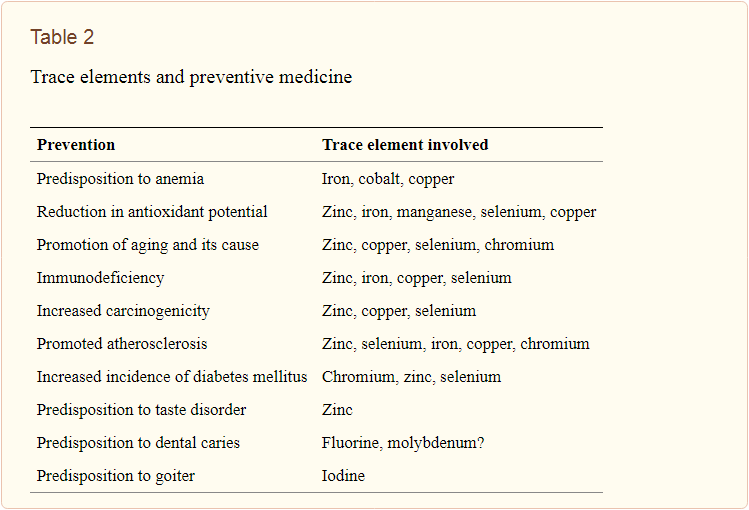
In the above Groups the first three are written as an inclusive set while the remaining two are add-ons. It is a reflection of a recurring mental process humans can be noted for engaging in as part of a cognitive repetition, perhaps similar to the usage of the first two fingers (that is the thumb, index and middle fingers) for holding a pen or pencil while the other two are used as supports... like two upward thrusting pieces of wood used as a back support connected to a tripod of legs used for a stool. And even though some readers may think that the analogy is amusing but not actually of any importance in the discussion of elements used by living systems, the point is that the underlying pattern represents the type of recurring thought processing... via a numerical channel, that is being used to analyze the elements. For example, a usage of the "three" can be seen when a commentator reflects on the first three elements (Carbon, Hydrogen, Oxygen) being set apart from the others by the fact that they represent the greatest percentage:
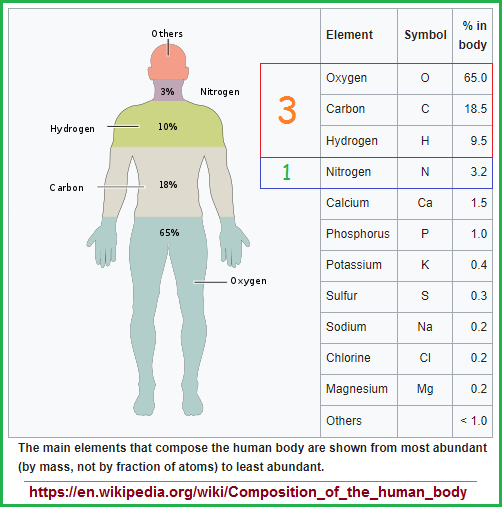
Composition of the human body
Whereas we don't have to focus on the 3 most abundant, we could instead include the next one which can provide us with a 3 to 1 ratio, or include the so-called "trace" elements providing us with a "5" categorization, or even a 2/3 formula. Hence, we have a 1-2-3 image by different turns of thought. However, which one is most useful in underlying human cognitive patterning? Do they not also arise in different subjects in different ratios and present us with an overall ratio when all the ratios are combined, though no one has yet done it? Why do we excuse ourself from attempting such a feat of organization? When there are only a handful of patterns and so many of them repeat because human mental processing is so repetitive and limited, is our lack of doing so part of the limitation? Do we express yet another limitation in our lack of addressing the extent of human cognitive limitations that are concealed by the usage of words meant to describe other than limitation?
Yet if we don't take the time catalog all the percentages of recurrences of the handful of human cognitive patterns being used, will we also limit ourselves to addressing the issue of what may be causing the limitation, aside from some knee-jerk response pertaining to one or another supposition based on guesswork that we might want to try to qualify by describing it as "educated guess work"?
Here is a referential example:
As noted in the Tour De France 2019 page, the French do not like to run the Tour de France professional bicycle race over the same course because this enables them to not readily identify patterns between racers from one year to the next. By changing the venue, they can conceal the adoption of a method for establishing a model by which comparisons between racers can be ascertained, which might help the world identify how the French come up short in talent and ability. The French prefer the social aspect of racing to the point of engaging in handing out awards more suitable for children (such as Teddy bears) and adolescent females (such as flowers), and those with a feminine orientation towards a wardrobe (such as Jerseys with zippers on the back), all of which involve the old habit of thinking in terms of royalty, where dependency for helping someone get dressed is an expression of master/servant, not to mention the role in which most riders are to play the part of being a domestic servant supporting a chosen leader. The present rules of the Tour de France is an expression of the old serving king and country attitude seen in Britain as well, along with the other countries whose populace have not yet fully grown out of the old mentality.
This same inclination to perpetuate old thinking in adopted standards of cognitive orientation found in different subjects is evidenced in what can be described as the Standard Cognitive Model illustrated by the Pentadactyl Limb model that is more easily understood as part of the old thinking formula when it is placed into a Sociological/ Political Science context:
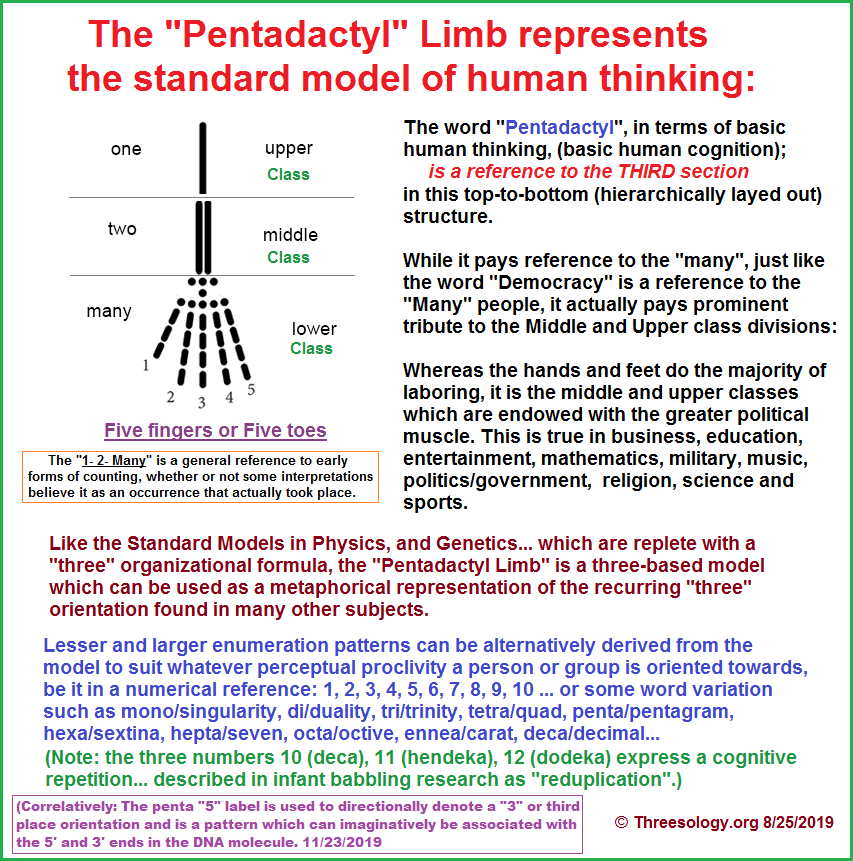
Although the word "Pentadactyl" means five, it actually is referencing the third part in the limb structure. Hence, a non-"three" word is being used to describe a third position, not to mention the "The Pentadactyl Limb" is a pattern-of-three phrase.
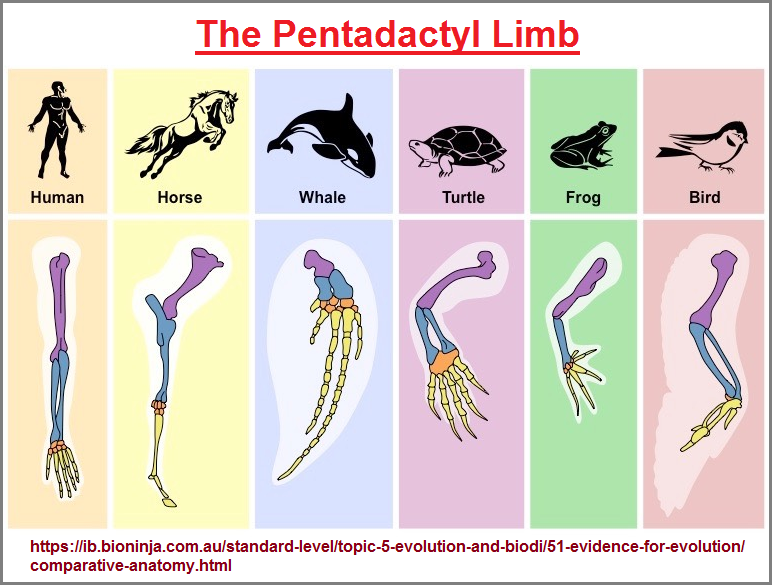
"The Pentadactyl Limb" is a three-patterned phrase which pays reference a limb bearing five digits (fingers or toes) which is present in amphibia, reptiles, birds and mammals. The limb is thought to have been evolved largely for life on land and consists of three main parts:
- The humerus (anterior limb) or femur (posterior limb);
- The radius and ulna (anterior), or tibia and fibula (posterior);
- A hand or foot made up of carpals (anterior) or tarsals (posterior), metacarpals or metatarsals and phalanges. In many forms the limb is much modified for activities such as flying, running, or swimming.
Source: The Free Dictionary by Farlex
Just as we described different percentages of elements in the human body, so can different percentages of patterns can be found in human thinking... in human cognition. In other words, there are main percentages such as patterns-of-two and three, and trace percentages. No less, we find thought patterns which are potentially toxic to our well-being, though any substance in abundance, reduction or complete absence may play the part of being useful or deleterious to health. However, when we describe the typical "body" in making a determination of what amounts to be the averaging of percentages, though this averaging may not be spoken of as a consideration, we must decide on how we are going to ascertain what we mean by a presently assumed "average" form of human cognition.
Does such an animal as an "average" human mind exist? Or are there multiple averages describing different states of human development in terms of evolutionary characteristics brought on by terrain, diet and culture applied to different formulas of human development? For example, if we say Schizophrenia stays at an assumed constant 1 percent throughout the human population of the world, does this mean it has some survival necessity akin to some instinct that is transplantable via human genetics because it is an ancient organism that has "learned" to survive by way of an adopted symbioses? How does the presence of an assumed disposition towards being schizophrenic affect the assumed percentage of repeating cognitive patterns used by an assumed average mind?
Human cognition has not been studied in terms of it patterns analogically referred to in terms of being elements with percentages and the terminology of "trace" patterns or trace patterning. While psychologists, psychiatrists, counselors, teachers, parents, etc., attempt the analysis of human thought by unraveling certain patterns that they themselves may or may not be obsessed with and want to view the disposition of others solely from their own vantage point(s) of interest to assist, control or undermine someone, most appear not to be aware of basic patterns within the larger scope of consideration when all the typical conventions of emotionalized description and culturalized descriptives are stripped away. It is typically only philosophers (apparently, philosophical theologians) who dwell into the language realm of monality, dichotomy, and trichotomy (etc.), though in a very limited sense with respect to their subjective interest such as is related to the mind-body-spirit discussions. They don't recognize such labels are useful for describing human thought in all subjects and that they reference limitations of thinking and imagination as a reflection of an environmental disposition.
In extension, the "body-mind-soul" may give reference to three kinds of each of these three, though it is only the third item "soul" which actually gets focused on to warrant an elaboration. In other words, it is not customary to find references to three kinds of bodies or three kinds of minds:
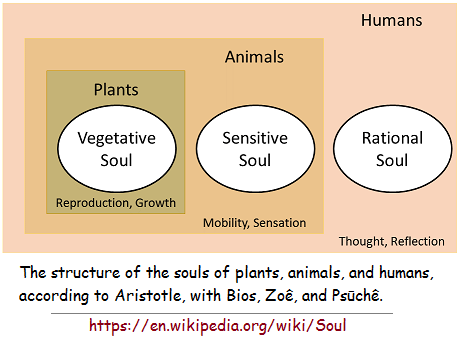
Wikipedia: soul
Interestingly, draped into the language of a different subject's theater (robotics), we find a related discussion using the cognitive pattern of embellishing a dichotomy, that one might easily assume the authors are oblivious of the pattern as an old cognitive refrain dressed in the garments of a different language oriented in a different direction, albeit while standing relatively in the same mental spot as billions of others, because their idea pays reference to the embellishment of a dichotomy being presented as a third option:
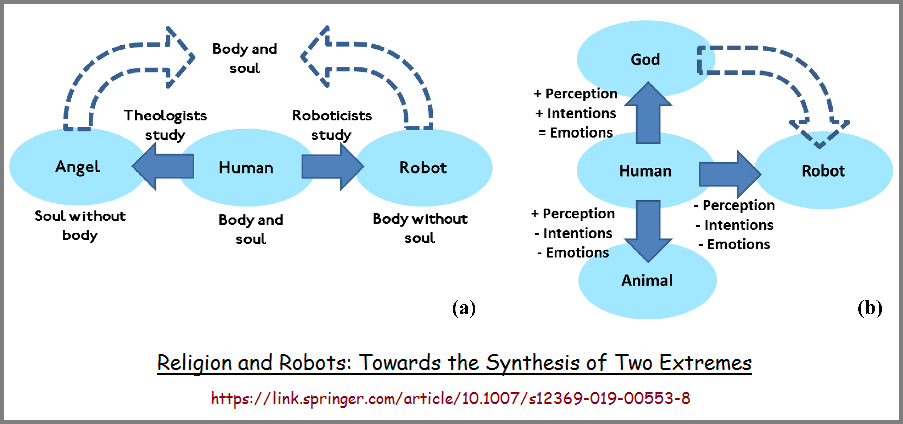
Religion and Robots: Towards the Synthesis of Two Extremes
by Gabriele Trovato, Loys De Saint Chamas, Masao Nishimura, Renato Paredes, Cesar Lucho, Alexander Huerta-Mercado, Francisco Cuella
This morning, 15th of November at around 3:00 AM, I was awakened by the thought that the differing realities experienced by humanity represent a profoundly pathetic existence. All the absolutely stupid institutions which are ceremonially exercised as if they have some great meaning is a representation of how utterly ignorant the species remains and perpetuates the same nonsense generation after generation after generation and call this life and living! All the multitude of idiotic government ideologies, business models and religious orientations are an ongoing comedies seemingly without end. Humanity is the punch line for a joke that is no longer funny... having no doubt been perpetrated by inebriated "gods" engaging in mischievousness.
The model presented by those working primarily in the area of basic elements for living systems is an architecture which can be applied to a Threesological approach of human cognition that is then applicable to all other subjects. We have the three main percentaged elements as a group, then the larger but lesser percentaged elements, followed by trace elements. This is a pattern-of-three that one might either rigidly or loosely apply to the cataloguing of cognitive patterns such that we find a few dominantly recurring number patterns, followed by lesser occurring patterns, followed by "trace" percentages of other number patterns. If we use the analogy of say... sing, sang, sung, it brings to mind the notion that the trace elements may have at one time played a more prominent role, but are now— like the half-lives of nuclear particles, more diminished and may become more so over time. However, like the recurrence of a few dominant patterns such as the "threes" in genetics and atomic particles, a few cognitive patterns remain at the forefront of usage while others are decreasing in the percentage of usage... though at present they may appear to be stable.
For those who claim off the top of their head that patterns-of-two are more prominent than any other pattern and that there are those who would like to claim that patterns-of-seven are most important because surveys conducted on a given internet population choose number 7 as their favorite number, thereby being meant to be interpreted that it is the dominant cognitive pattern; typically overlook the overall observation that when we take into account all the supposed favorite and dominant number patterns, there are only a very small "trace" amount of numbers being used as representations of the kinds of thinking humans engage in. For example, we don't routinely encounter people thinking in patterns of a thousand, or some specific larger number value without it being subjected to some small number formula of categorization.
When we take into account the so-called "All" the number patterns being used, the usage of the word "all" and its derivatives conceals the acknowledgement that it is only a very small sampling of numbers which are being used to express human ideas, beliefs, feeling, notions, suggestions, etc... Out of all the supposed infinity of numbers available for usage, we humans only use... and reuse... and reuse... a very small "trace" segment of patterns which are available. And we aren't trying to account for this limitation nor extrapolate the realization to the idea that imagination may well be limited... as an occurrence of an imposed requirement on biological activities within the confines of an incrementally deteriorating environment which forces biological events to try to maintain some semblance of equilibrium within the cycle of internal and external deterioration.
However, now we come to a point of consideration in which we are confronted with the notion of whether the cycle is analog, digital... as well as being either parallel or in series... as part of a dichotomy, a transitional embellished dichotomy, or a third as yet unlabeled state of occurrence. Much like those who are trying to move beyond the present stage of a binomial (0s/1s) computer language based on the on/off properties of how we presently look at electrical activity like a primitive who repeatedly put their hand in and out of a fire so as to establish a connection between the fire and pain, we are at a threshold of moving beyond the need for such a continued repetition of experience in our thinking processes.
Easier said than done. While we can gain experience from observing someone continue to repeat themselves getting hurt by fire, we need to be the one who is observing us observing them, if I am permitted to use such a simple analogy that some people play with in their repetitive usage of looking into the reflections of reflections and imagining they are somehow delving into an uncharted realm of exploration and discovery that is somehow perceptible to those who can see far enough into the cascading effect of mirror imaged images of mirrored images imagining themselves... much in the manner when an animal discovers themselves in a mirror though they may have first thought it to be another animal... like a person having been frightened by seeing their own image while walking about a dark room with a small light such as a torch, lantern, flash light, match, or candle. Whereas the dark room is akin to the cave of Plato akin to the present state of the human mind grappling with shadows that are interchangeably interpreted as being significant, insignificant, or a possibility.
In our models of repetition we may eventually come across another model which leads us out of the darkened room... if only to yet another darkened room, whereby we think to claim this as a step forward; how do we acquire full... or just enough illumination to get a better bearing of where we are, when we are, and which way to go, particularly if we have arrived at our destination but can not yet decipher the experience to its fullest meaning and most fulfilling application? How can we be certain this is not just another mechanism of maintaining some semblance of equilibrium in an incrementally deteriorating system of internal and external interactions?
Origination date: Tuesday, November 12th, 2019... 4:13 AM
Initial Posting: Saturday, November 16, 2019... 7:34 AM
Updated Posting: Friday, January 20th, 2023... 12:38PM
Herb O. Buckland
herbobuckland@hotmail.com